Discarded Dilemma - Threats from Discarded Fishing Nets on Marine Life
Every year, oceans around the globe are littered with millions of tons of waste, and among the most insidious culprits are abandoned fishing nets. Known as ghost nets, these discarded pieces of fishing gear drift aimlessly through our waters, posing a grave threat to marine life. Imagine a vast underwater labyrinth where unsuspecting creatures become ensnared, struggling to break free but ultimately succumbing to their fate. This article dives deep into the environmental impact of ghost nets, highlighting their dangers to wildlife and exploring potential solutions to mitigate these threats.
Ghost nets are not just an eyesore; they are a silent killer in our oceans. These nets can entangle and injure a variety of marine animals, including turtles, seabirds, and marine mammals. When creatures become trapped, they often face a slow and painful demise. For example, sea turtles may drown or suffer severe injuries as they struggle against the mesh. The effects are not limited to individual animals; entire populations can decline as a result of these entanglements, ultimately altering the delicate dynamics of marine ecosystems. It’s like a game of dominoes—when one species is affected, others that rely on them for food or ecological balance are also thrown into chaos.
Understanding the scale of the ghost net problem requires a look at the staggering statistics related to marine entanglement. According to recent studies, it is estimated that over 640,000 tons of fishing gear are lost or discarded in the ocean each year. This debris poses a significant risk to marine wildlife, with thousands of marine species affected annually. The figures are alarming:
| Year | Estimated Marine Animals Affected |
|---|---|
| 2018 | 100,000 |
| 2019 | 120,000 |
| 2020 | 150,000 |
These numbers highlight an urgent need for action. The more we understand the impact of ghost nets, the better equipped we are to tackle the issue head-on.
Some species are particularly vulnerable to the perils of ghost nets. Sea turtles, for instance, are often caught in these nets while swimming, leading to injuries that can affect their ability to eat or reproduce. Dolphins, too, are not exempt from the dangers, as they may become entangled during their playful antics. The consequences are dire:
- Sea Turtles: Suffocate or drown when trapped.
- Dolphins: Injuries can lead to infections or death.
- Seabirds: May get caught while diving for food.
Each of these species plays a crucial role in their respective ecosystems, and their decline can have a ripple effect on the health of marine environments.
Several case studies illustrate the tragic impact of ghost nets on specific species. For example, the loggerhead turtle population has seen a significant decline due to entanglement in fishing gear. In one notable instance, researchers found that over 50% of the turtles examined had been affected by ghost nets at some point in their lives. These case studies underscore the urgent need for conservation efforts aimed at protecting these vulnerable populations.
The long-term effects of ghost nets stretch far beyond immediate entanglements. As affected species struggle to survive and reproduce, biodiversity suffers. A decline in one species can lead to an imbalance in the ecosystem, affecting everything from food chains to habitat health. Imagine a garden where one type of flower dies off; soon, the entire garden suffers as pollinators and other plants are impacted. The same principle applies in our oceans, where the loss of biodiversity can result in an ecosystem that is less resilient to changes and more susceptible to collapse.
Fortunately, various strategies are being implemented to combat the effects of ghost nets. Community clean-up initiatives are gaining traction, with volunteers working tirelessly to remove debris from beaches and waters. Additionally, innovative recycling programs are being developed to repurpose discarded fishing gear into new products. These efforts not only help reduce marine debris but also raise awareness about the issue.
To effectively address the problem of discarded fishing nets, strong legislation and policy changes are essential. Governments around the world must promote responsible fishing practices and encourage the development of biodegradable alternatives to traditional fishing gear. By implementing regulations that hold fishermen accountable for their gear, we can significantly reduce the number of ghost nets entering our oceans.
International cooperation is critical in tackling the global issue of ghost nets. Agreements aimed at reducing marine pollution and promoting sustainable fishing practices are essential for creating a unified front against this environmental threat. Countries must work together to share knowledge, resources, and strategies to combat the problem effectively.
Local initiatives play a vital role in raising awareness about the dangers of ghost nets. Community engagement in clean-up efforts fosters a culture of environmental stewardship, encouraging individuals to take responsibility for their local marine environments. By participating in these initiatives, communities can make a tangible difference and inspire others to join the cause.
Q: What are ghost nets?
A: Ghost nets are abandoned fishing nets that continue to trap marine life, posing a significant threat to wildlife.
Q: How do ghost nets affect marine ecosystems?
A: Ghost nets can lead to entanglement and injury of marine animals, resulting in population declines and altered ecosystem dynamics.
Q: What can be done to mitigate the impact of ghost nets?
A: Strategies include community clean-up initiatives, recycling programs, and stronger legislation promoting responsible fishing practices.

The Impact of Ghost Nets on Marine Wildlife
Ghost nets, the abandoned fishing gear that floats aimlessly in our oceans, are a silent yet deadly threat to marine wildlife. These nets can drift for years, ensnaring anything that crosses their path. Imagine a vast underwater jungle where creatures, both large and small, become trapped in a web of despair, unable to escape. Species such as sea turtles, seabirds, and marine mammals often find themselves victims of these ghostly traps, leading to severe injuries or even death. The consequences are dire, not just for individual animals but for entire ecosystems that rely on a delicate balance of species.
When marine animals become entangled in ghost nets, the repercussions are often fatal. For instance, sea turtles may drown after getting trapped, while seabirds can become unable to feed or fly. The impact doesn't stop there; it ripples through the food chain. As these vital species decline, their predators and prey are also affected, leading to a cascading effect that disrupts the entire marine ecosystem. It's like pulling a thread from a tapestry—the entire design begins to unravel.
Furthermore, ghost nets can also cause physical damage to coral reefs and other critical habitats. As these nets drift and move with ocean currents, they can scrape against coral, leading to destruction that takes years, if not decades, to recover. This damage not only affects the marine life that depends on coral reefs for shelter and food but also impacts human communities that rely on these ecosystems for their livelihoods, such as fishing and tourism.
To better understand the impact of ghost nets, consider the following statistics:
| Species Affected | Estimated Annual Deaths |
|---|---|
| Sea Turtles | Over 1,000 |
| Seabirds | Approximately 200,000 |
| Dolphins | Up to 20,000 |
As we look at these numbers, it becomes clear that the impact of ghost nets is not just a minor issue; it's a significant threat that demands our attention. The survival of these species is intertwined with the health of our oceans, and if we don't act now, we risk losing not just these animals but the entire marine ecosystem. In essence, ghost nets are more than just discarded fishing gear; they are a symbol of our negligence towards the ocean and its inhabitants.
In conclusion, the impact of ghost nets on marine wildlife is a pressing issue that requires immediate action. By raising awareness and implementing effective solutions, we can help protect our oceans and the incredible creatures that call them home. Let’s work together to turn the tide against this silent killer and restore balance to our marine ecosystems.
- What are ghost nets? Ghost nets are abandoned fishing nets that continue to entangle marine wildlife.
- How do ghost nets affect marine ecosystems? They cause injuries and deaths to marine animals, disrupt food chains, and damage critical habitats like coral reefs.
- What can be done to mitigate the impact of ghost nets? Community clean-ups, recycling programs, and legislative changes can help address the issue.

Statistics on Marine Entanglement
When we dive into the world of marine entanglement, the numbers can be shocking. Each year, millions of marine animals fall victim to the silent menace of ghost nets. These abandoned fishing nets not only threaten the lives of individual species but also disrupt entire ecosystems. According to recent studies, it is estimated that approximately 100,000 marine mammals, 300,000 seabirds, and countless fish species become entangled in discarded fishing gear annually. This staggering statistic highlights a growing crisis that demands our immediate attention.
To put this into perspective, let's break down some of the key statistics that reveal the extent of the problem:
| Species Affected | Estimated Annual Deaths |
|---|---|
| Marine Mammals | 100,000+ |
| Seabirds | 300,000+ |
| Fish Species | Millions |
These figures are not just numbers; they represent a significant loss of biodiversity and a warning sign that our oceans are in peril. Imagine a world where species like the Hawksbill turtle or the North Atlantic right whale are driven to extinction due to our negligence. The impact of ghost nets extends beyond the immediate harm to wildlife. When these animals are caught, they often suffer prolonged and painful deaths, which can lead to shifts in population dynamics and the health of marine ecosystems.
Furthermore, the entanglement of these animals can result in a ripple effect throughout the food chain. For example, when apex predators like sharks or large fish are affected, their absence can lead to overpopulation of smaller species, disrupting the balance of the marine environment. This chain reaction emphasizes the critical need for awareness and action.
As we consider these statistics, it becomes clear that the issue of ghost nets is not just an environmental concern; it is a pressing humanitarian challenge that calls for collective action. By understanding the scale of marine entanglement, we can better advocate for solutions that protect our oceans and the diverse life they harbor.
- What are ghost nets? Ghost nets are fishing nets that have been lost or abandoned in the ocean, continuing to trap marine life long after they are no longer in use.
- How do ghost nets affect marine life? Ghost nets entangle marine animals, leading to injuries and fatalities, and disrupt the balance of marine ecosystems.
- What can be done to mitigate the impact of ghost nets? Community clean-up initiatives, recycling programs, and stricter fishing regulations are all essential steps in addressing this issue.

Common Species Affected
When we talk about the devastating effects of ghost nets, it's crucial to shine a spotlight on the common species that fall victim to these abandoned fishing nets. Among the most affected are sea turtles, dolphins, and seabirds. These creatures, which play vital roles in their ecosystems, often find themselves ensnared in the tangled web of synthetic fibers, leading to injury or even death. Imagine a graceful sea turtle, gliding through the ocean, suddenly caught in a net—its natural instincts unable to free it from the grasp of human negligence. This scenario is all too common.
Sea turtles, in particular, are highly vulnerable. They can become entangled while swimming or nesting, often resulting in severe injuries. The struggle to escape can lead to exhaustion, drowning, or even fatal wounds. Similarly, dolphins, known for their intelligence and playful nature, can find themselves trapped, unable to surface for air. This not only jeopardizes their lives but disrupts their social structures and breeding patterns.
Seabirds also suffer immensely from ghost nets. These birds, which rely on the ocean for food, can become ensnared while diving for fish. Their wings can become tangled, preventing them from flying and leading to starvation. In fact, a study revealed that over 200 species of seabirds are affected by marine debris, with ghost nets being a significant contributor. The impact of these nets goes beyond individual animals; it ripples through entire ecosystems.
To illustrate the severity of this issue, let’s take a closer look at some specific species:
| Species | Impact of Ghost Nets | Conservation Status |
|---|---|---|
| Sea Turtles | Entanglement leads to injury, drowning, or inability to nest. | Endangered |
| Dolphins | Stranded or unable to breathe, affecting social groups. | Vulnerable |
| Seabirds | Starvation due to entrapment, impacting breeding. | Various statuses |
These statistics and stories highlight the urgent need for conservation efforts. If we don’t act, we risk losing not just individual species but also the intricate balance of marine ecosystems. It’s a wake-up call for all of us to take responsibility and engage in actions that protect these magnificent creatures.
- What are ghost nets? Ghost nets are abandoned or lost fishing nets that continue to trap marine life.
- How do ghost nets affect marine ecosystems? They cause injuries, deaths, and population declines in various marine species, disrupting the balance of ecosystems.
- What can be done to mitigate the effects of ghost nets? Community clean-ups, recycling programs, and stricter fishing regulations are essential steps.

Case Studies of Affected Species
The devastating impact of ghost nets on marine life is not just an abstract concept; it is a harsh reality that has been documented through various case studies. One of the most poignant examples involves the loggerhead sea turtle. These turtles are often found entangled in abandoned fishing nets, which leads to severe injuries or even death. In a study conducted off the coast of Florida, researchers discovered that nearly 50% of the loggerhead population showed signs of entanglement, highlighting the urgent need for conservation efforts.
Another alarming case involves the Hawaiian monk seal, a species already teetering on the brink of extinction. Researchers have recorded numerous instances of these seals becoming trapped in ghost nets, resulting in significant injuries that hinder their ability to hunt and reproduce. In one notable incident, a female monk seal was found with a net wrapped tightly around her body, severely restricting her movement. Despite rescue efforts, the long-term effects of such entanglements can be detrimental, reducing the chances of survival for both the individual and the population.
In addition to reptiles and mammals, seabirds like the albatross are also victims of ghost nets. These magnificent birds often dive for fish, only to become ensnared in discarded nets floating in the ocean. A study conducted in the Southern Ocean revealed that ghost nets were responsible for a significant percentage of albatross deaths, further contributing to the decline of their populations. The loss of these birds not only affects their species but also disrupts the intricate balance of marine ecosystems, as they play a crucial role in controlling fish populations.
To illustrate the scope of the problem, consider the following table that summarizes the impact of ghost nets on various marine species:
| Species | Impact of Ghost Nets | Population Status |
|---|---|---|
| Loggerhead Sea Turtle | High entanglement rates leading to injuries and mortality | Threatened |
| Hawaiian Monk Seal | Severe injuries affecting hunting and reproduction | Endangered |
| Albatross | High mortality rates due to entanglement | Vulnerable |
These case studies underscore the dire consequences of ghost nets on marine wildlife. The stories of these affected species serve as a clarion call for immediate action. Conservationists, researchers, and local communities must unite to develop comprehensive strategies to address this pressing issue. By raising awareness and implementing effective solutions, we can help protect these vulnerable populations and ensure the health of our oceans for generations to come.
Q: What are ghost nets?
A: Ghost nets are abandoned, lost, or discarded fishing nets that continue to trap marine life, causing injury and death to various species.
Q: How do ghost nets affect marine ecosystems?
A: Ghost nets can significantly disrupt marine ecosystems by causing population declines in affected species, which can lead to imbalances in the food web and reduced biodiversity.
Q: What can be done to mitigate the effects of ghost nets?
A: Various strategies include community clean-up initiatives, recycling programs for fishing gear, and the promotion of biodegradable alternatives to traditional nets.
Q: Are there any laws addressing the issue of ghost nets?
A: Yes, several international agreements and local policies aim to reduce marine pollution, promote sustainable fishing practices, and encourage responsible disposal of fishing gear.
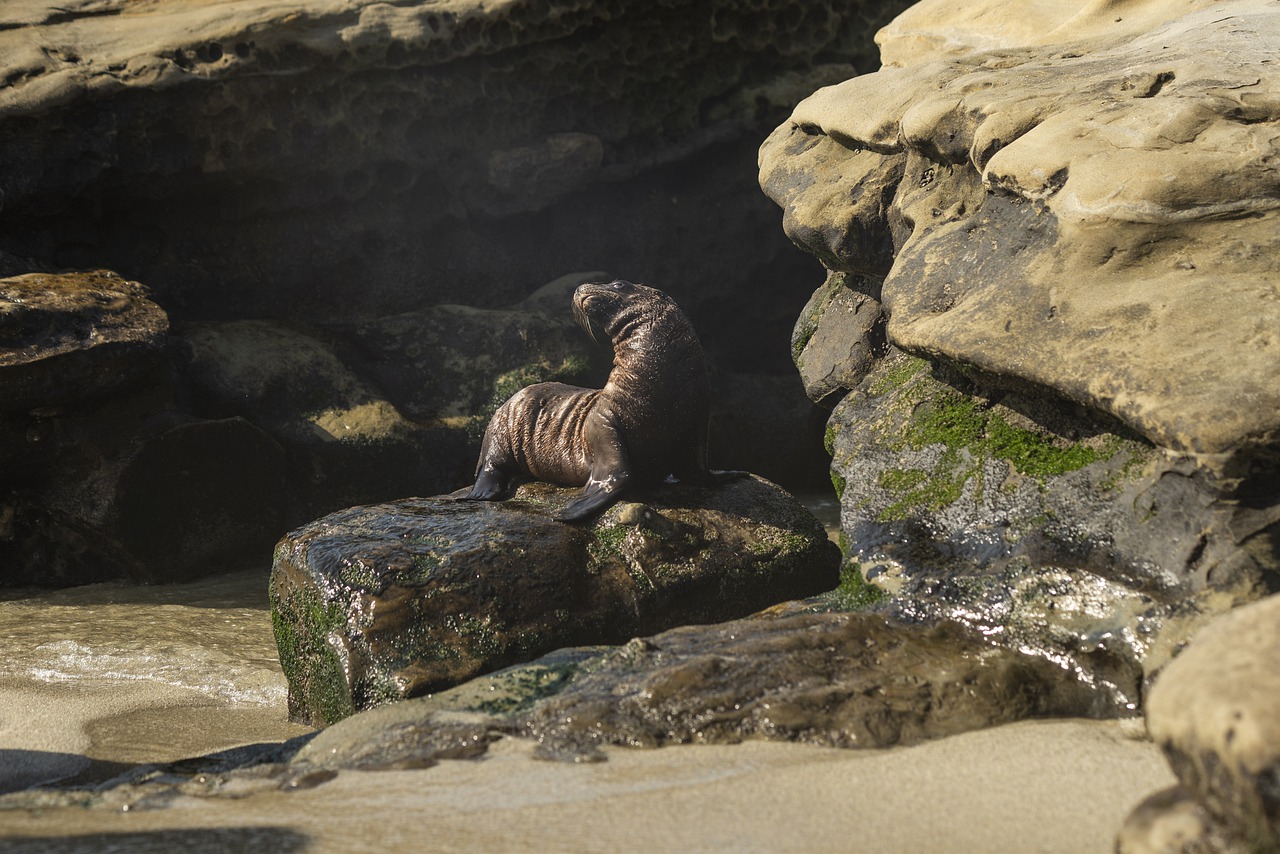
Long-term Effects on Biodiversity
The long-term effects of ghost nets on biodiversity are profound and alarming. When these abandoned fishing nets drift aimlessly through our oceans, they don't just pose immediate threats to individual marine creatures; they set off a chain reaction that can disrupt entire ecosystems. Imagine a web of interconnected life, where each species plays a crucial role in maintaining balance. Now picture that web being torn apart, strand by strand, as key species are injured or killed by entanglement. This is the reality we face with ghost nets.
As ghost nets entrap and kill marine life, they contribute to a decline in biodiversity that can have cascading consequences. For instance, when a population of a particular species, such as sea turtles or dolphins, is significantly reduced, it can lead to overpopulation of other species, disrupting the food chain. Predators may find themselves without enough prey, while herbivores may proliferate unchecked, leading to overgrazing of vital habitats like seagrass beds and coral reefs. This imbalance can ultimately result in habitat degradation, which further threatens the survival of numerous marine species.
Furthermore, the loss of biodiversity can diminish the resilience of marine ecosystems. Healthy ecosystems are like a well-oiled machine, where each part works harmoniously together. When ghost nets remove key species, the entire system becomes vulnerable to other stressors, such as climate change and pollution. For example, coral reefs, which are already under threat from warming waters, become even more fragile when the fish populations that help maintain their health decline due to ghost net entanglement.
To truly grasp the scale of this issue, consider the following statistics:
| Species Affected | Estimated Annual Deaths Due to Ghost Nets |
|---|---|
| Sea Turtles | 4,600 |
| Seabirds | 200,000 |
| Dolphins | 1,000 |
These numbers are not just statistics; they represent the loss of individual lives and the potential extinction of entire species. Each death reverberates through the ecosystem, affecting everything from nutrient cycling to the health of ocean habitats. The urgency to address the issue of ghost nets cannot be overstated. Without immediate action, we risk losing not just individual species, but the very fabric of marine biodiversity that sustains our oceans.
In conclusion, the long-term effects of ghost nets extend far beyond the immediate harm they cause to marine life. They threaten the intricate balance of our oceans, leading to reduced biodiversity and weakened ecosystems. To combat this crisis, we must implement comprehensive strategies that not only address the removal of ghost nets but also foster a deeper understanding of marine conservation and the interconnectedness of all ocean life.
- What are ghost nets? Ghost nets are abandoned or discarded fishing nets that continue to trap marine life, causing injury and death.
- How do ghost nets affect marine ecosystems? They disrupt the balance of marine life, leading to decreased biodiversity and habitat degradation.
- What can be done to mitigate the effects of ghost nets? Community clean-up initiatives, recycling programs, and effective legislation are crucial in addressing this issue.
- Why is biodiversity important for marine ecosystems? Biodiversity ensures the resilience and health of ecosystems, allowing them to withstand environmental changes and stresses.
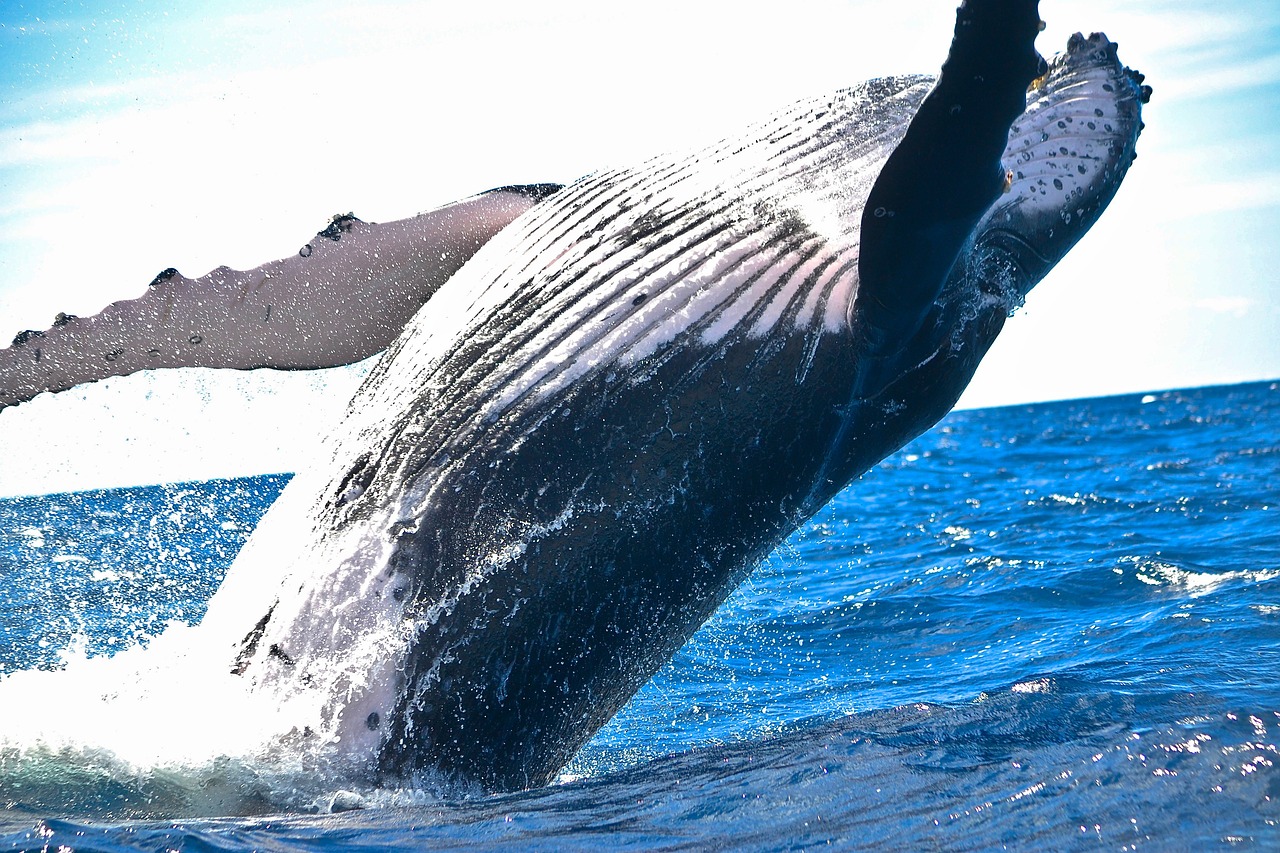
Mitigation Strategies for Ghost Nets
When it comes to tackling the pervasive problem of ghost nets, a multi-faceted approach is essential. These abandoned fishing nets not only wreak havoc on marine life but also pose a significant threat to the overall health of our oceans. So, what can be done to combat this issue? Well, several innovative strategies are being implemented around the globe that aim to reduce the impact of ghost nets and promote a cleaner marine environment.
One of the most effective strategies is the organization of community clean-up initiatives. These events bring together local volunteers, environmental organizations, and fishing communities to actively remove ghost nets and other debris from coastal areas and the ocean floor. Not only do these clean-ups directly reduce the amount of hazardous materials in the water, but they also raise awareness about the issue, fostering a sense of responsibility and stewardship among participants. Imagine a community coming together, armed with gloves and nets, working side by side to restore their local marine habitat. It’s a powerful image that speaks volumes about collective action.
In addition to clean-up efforts, innovative recycling programs are gaining traction as a way to repurpose discarded fishing gear. For instance, some organizations are transforming old nets into new products, such as durable bags, clothing, and even construction materials. This not only helps to reduce waste but also provides a sustainable alternative to traditional materials. By turning what was once considered trash into treasure, we can effectively minimize the overall volume of ghost nets entering our oceans.
Moreover, educational programs are crucial for prevention. By informing fishermen about the long-term consequences of abandoning nets and providing them with resources for proper disposal, we can significantly reduce the number of ghost nets generated each year. Workshops, informative pamphlets, and community outreach can make a profound difference. After all, knowledge is power, and when fishermen understand the impact of their actions, they are more likely to adopt responsible practices.
Finally, collaboration between governments, non-profit organizations, and the fishing industry is vital. By working together, these entities can develop policies that promote sustainable fishing practices and encourage the use of biodegradable fishing gear. Imagine a future where nets break down naturally, reducing the risk of entanglement and pollution. This vision is not far-fetched; it’s a goal that can be achieved through concerted effort and innovation.
In conclusion, while the threat of ghost nets is daunting, the strategies we implement today can pave the way for a healthier marine ecosystem tomorrow. By engaging communities, recycling materials, educating fishermen, and fostering collaboration, we can mitigate the impact of ghost nets and protect our oceans for generations to come.
- What are ghost nets? Ghost nets are abandoned, lost, or discarded fishing nets that continue to capture marine life, causing significant harm to ecosystems.
- How do ghost nets affect marine wildlife? Ghost nets entangle marine animals such as turtles, dolphins, and seabirds, leading to injury or death, which disrupts their populations and habitats.
- What can I do to help reduce ghost nets? You can participate in local clean-up events, support organizations that recycle fishing gear, and educate others about the importance of responsible fishing practices.
- Are there any laws regarding ghost nets? Yes, various countries are implementing legislation aimed at reducing marine pollution, promoting sustainable fishing, and encouraging the use of biodegradable materials.
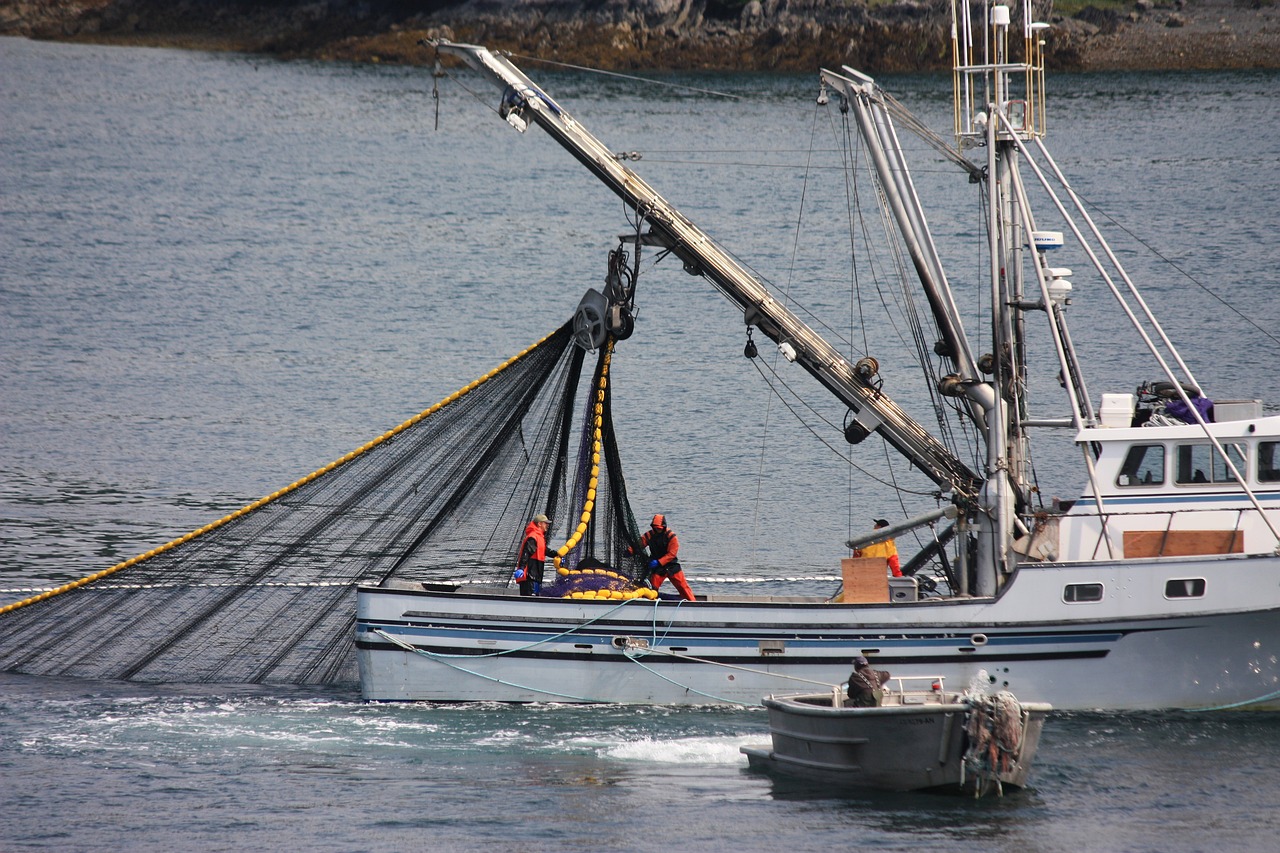
Legislation and Policy Changes
The issue of discarded fishing nets, or ghost nets, is not just an environmental concern; it’s a call to action for governments and organizations worldwide. Effective legislation and policy changes are crucial in addressing the growing problem of marine debris. By implementing strict regulations on fishing practices, we can significantly reduce the number of nets that are lost or abandoned in our oceans. For instance, many countries are beginning to enforce laws that require fishermen to report any lost gear, ensuring accountability and promoting responsible fishing practices.
Moreover, biodegradable alternatives to traditional fishing gear are gaining traction. These innovative materials can decompose over time, significantly reducing the risk of ghost nets accumulating in our oceans. Governments can play a pivotal role by incentivizing research and development in this area, encouraging manufacturers to produce more sustainable fishing equipment. Imagine a world where fishing gear does not contribute to pollution but instead becomes part of a circular economy!
In addition to local legislation, international agreements are essential. Global cooperation is necessary to tackle the widespread issue of ghost nets effectively. Treaties that focus on reducing marine pollution and promoting sustainable fishing practices can create a unified front against this environmental crisis. Countries can share best practices, technology, and resources, leading to more effective management of marine ecosystems.
One of the challenges in implementing these changes is ensuring compliance among fishermen and fishing companies. To address this, monitoring and enforcement mechanisms must be established. This could involve satellite tracking of fishing vessels and regular inspections at ports to ensure adherence to regulations. By creating a culture of accountability, we can foster a more responsible fishing industry.
Furthermore, education plays a vital role in these legislative efforts. Raising awareness about the consequences of ghost nets and the importance of sustainable practices is key. Educational programs targeting fishermen, coastal communities, and the general public can help shift perceptions and behaviors towards marine conservation. When individuals understand the impact of their actions, they are more likely to participate in conservation efforts actively.
To summarize, the path forward involves a multi-faceted approach, combining legislation, international cooperation, and education. The fight against ghost nets is not just about cleaning up our oceans; it’s about creating a sustainable future for marine life. By advocating for strong policies and engaging communities, we can turn the tide on this pressing environmental issue.
- What are ghost nets? Ghost nets are abandoned or lost fishing nets that continue to trap marine life, causing significant harm to ecosystems.
- How do ghost nets affect marine life? They entangle and injure various species, including turtles, seabirds, and marine mammals, leading to population declines.
- What can be done to prevent ghost nets? Implementing stricter fishing regulations, promoting biodegradable gear, and raising awareness are essential steps.
- Are there any international efforts to tackle this issue? Yes, international agreements aim to reduce marine pollution and promote sustainable fishing practices globally.
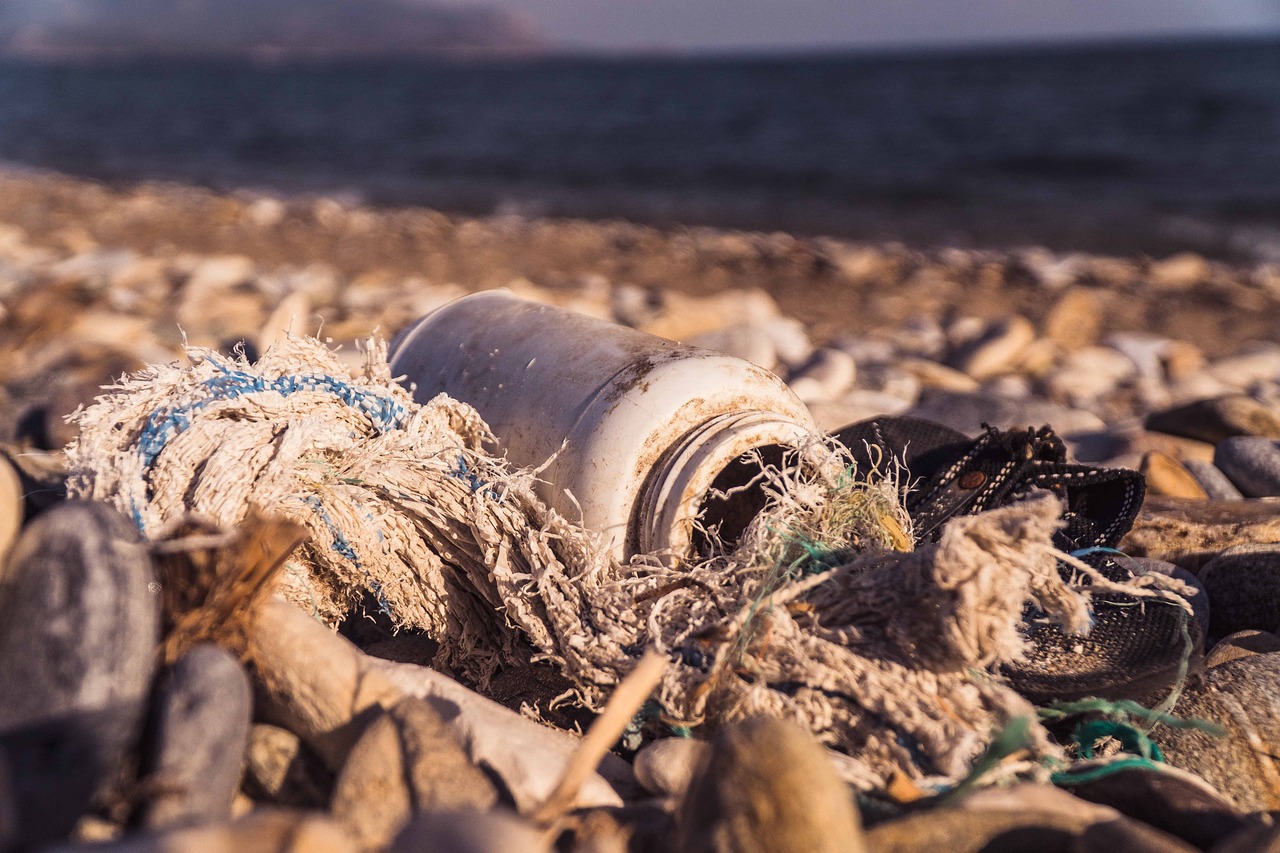
International Agreements and Cooperation
When it comes to tackling the pervasive issue of ghost nets and their impact on marine life, international cooperation is not just beneficial; it’s essential. The oceans do not recognize borders, and therefore, the solutions to marine pollution must transcend national lines. Numerous international agreements have been established to address the growing concern over ghost nets, aiming to foster sustainable fishing practices and reduce marine debris.
One of the prominent agreements is the United Nations Convention on the Law of the Sea (UNCLOS), which provides a legal framework for the conservation and sustainable use of the oceans. This convention emphasizes the responsibility of nations to protect marine environments from pollution, including debris from fishing activities. Additionally, the Global Programme of Action for the Protection of the Marine Environment from Land-based Activities (GPA) encourages countries to adopt measures that prevent marine pollution, including the disposal of fishing gear.
Moreover, regional initiatives such as the Barcelona Convention and the Oslo-Paris Convention (OSPAR) have been pivotal in promoting cooperation among Mediterranean and North-East Atlantic countries, respectively. These agreements facilitate collaborative efforts to monitor and manage marine litter, including ghost nets, through coordinated clean-up campaigns and shared best practices.
To further enhance these efforts, various non-governmental organizations (NGOs) and community groups are working alongside governments to implement these agreements. For instance, initiatives like Ocean Conservancy's International Coastal Cleanup mobilize volunteers globally to remove debris from coastlines, raising awareness about the dangers of marine litter. Such grassroots movements complement international treaties by fostering a sense of responsibility and stewardship among local communities.
In conclusion, while international agreements lay the groundwork for addressing the ghost net crisis, the true impact lies in the cooperation between nations and communities. By working together, sharing resources, and committing to sustainable practices, we can significantly reduce the threat posed by ghost nets to our precious marine ecosystems.
- What are ghost nets? Ghost nets are abandoned or lost fishing nets that continue to trap marine life, causing significant harm to ecosystems.
- How do ghost nets affect marine wildlife? They entangle various marine species, leading to injury, death, and disruption of natural habitats.
- What international agreements address ghost nets? Agreements like UNCLOS and the GPA focus on the sustainable use of marine resources and reducing pollution.
- How can communities help mitigate the effects of ghost nets? Community clean-ups and awareness campaigns can significantly contribute to reducing marine debris.
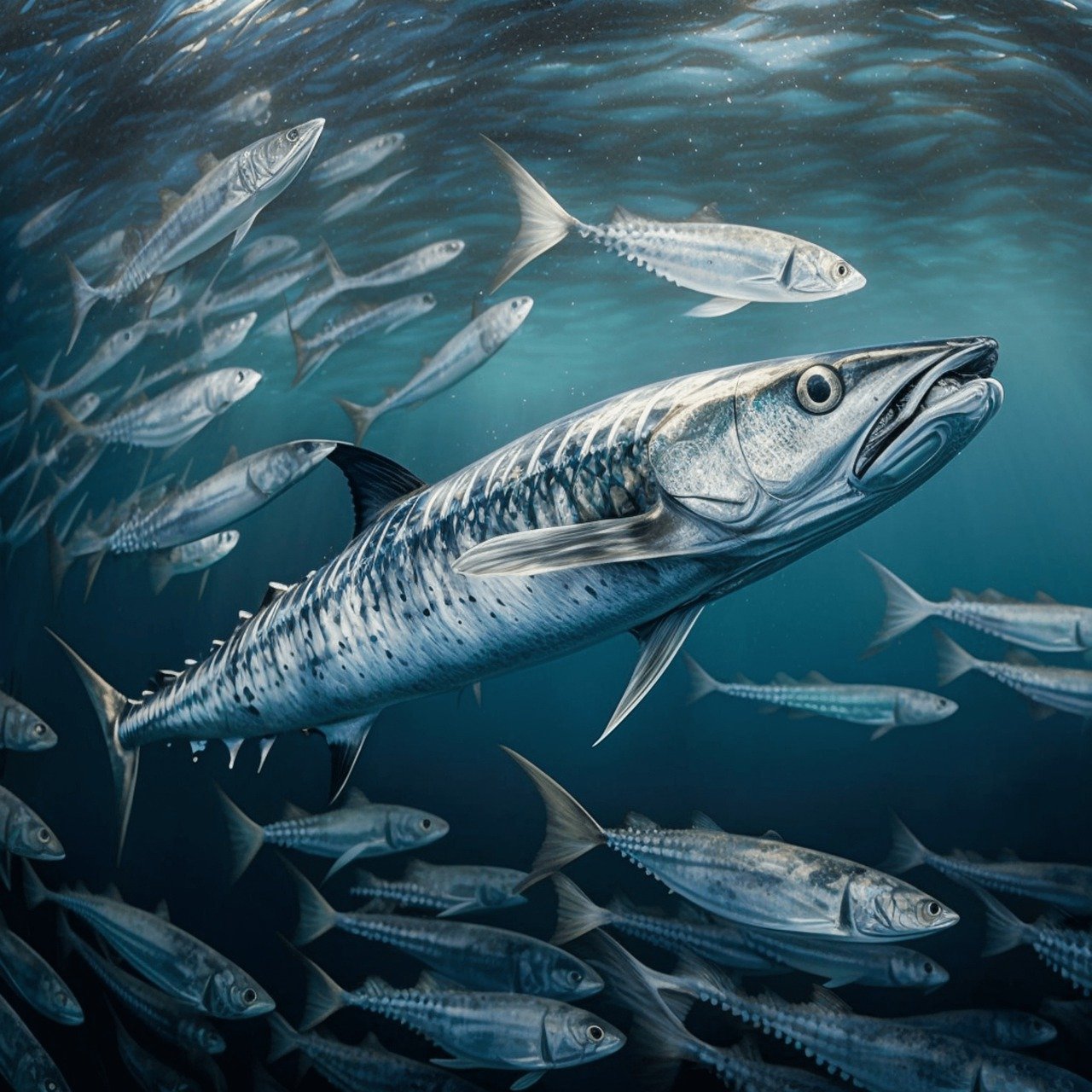
Local Initiatives and Community Engagement
When it comes to tackling the menace of ghost nets, local initiatives and community engagement are like the unsung heroes of the environmental movement. Imagine a community coming together, not just to clean up their beaches, but to actively participate in preserving the delicate balance of marine life. These grassroots efforts are vital because they foster a sense of ownership and responsibility among residents. When people feel connected to their local environment, they are more likely to take action to protect it.
One of the most effective ways communities engage is through organized beach clean-ups. These events not only help remove ghost nets and other debris from the shoreline but also serve as educational platforms. Participants learn about the impact of marine litter on wildlife and the importance of sustainable practices. For example, after a clean-up event in a coastal town, volunteers reported a significant increase in awareness about the dangers of ghost nets and the need for responsible fishing practices.
Additionally, local schools and organizations can play a pivotal role in educating younger generations. Imagine school projects focused on marine conservation, where students research the effects of ghost nets and present their findings to the community. This not only empowers the youth but also spreads knowledge and encourages family discussions about environmental stewardship. The ripple effect of such initiatives can be profound, creating a culture that values and protects marine ecosystems.
Moreover, community engagement can extend to local businesses as well. Many coastal towns rely on fishing and tourism, and by collaborating with local fishermen and businesses, initiatives can promote the use of biodegradable fishing nets and sustainable practices. This partnership not only helps protect marine life but can also enhance the reputation of businesses as environmentally responsible, attracting eco-conscious tourists.
In summary, local initiatives and community engagement are crucial in the fight against ghost nets. They not only clean up our oceans but also educate and empower individuals to make a difference. By coming together, communities can create a powerful force for change, proving that every small action counts in the grand scheme of environmental conservation.
- What are ghost nets? Ghost nets are abandoned or discarded fishing nets that continue to trap marine life.
- How do ghost nets affect marine wildlife? They can entangle and injure species such as turtles, seabirds, and dolphins, leading to population declines.
- What can individuals do to help? Participating in local beach clean-ups and advocating for responsible fishing practices are great ways to contribute.
- Are there any laws against ghost nets? Yes, many regions are implementing policies to address marine debris and promote sustainable fishing practices.
- How can communities raise awareness? Organizing educational events, workshops, and clean-up drives can effectively raise awareness about the dangers of ghost nets.
Frequently Asked Questions
- What are ghost nets and why are they a problem?
Ghost nets are abandoned or discarded fishing nets that continue to trap marine life long after they are lost. They pose a significant threat to wildlife, including turtles, seabirds, and marine mammals, leading to injury and death. Essentially, these nets become silent killers in our oceans, disrupting ecosystems and threatening biodiversity.
- How do ghost nets affect marine wildlife?
Ghost nets entangle various marine species, causing injuries that can lead to death. For example, sea turtles may become trapped while trying to swim, and seabirds can get caught while diving for food. This entanglement not only affects individual animals but can also lead to population declines, disrupting the balance of marine ecosystems.
- What statistics highlight the issue of marine entanglement?
Each year, millions of marine animals are affected by entanglement in discarded fishing gear. Studies suggest that ghost nets account for a significant percentage of marine debris, with thousands of species impacted. These alarming statistics underline the urgent need to address this environmental crisis.
- Which species are most vulnerable to ghost nets?
Some of the most vulnerable species include sea turtles, dolphins, and various seabirds. These animals often find themselves in dangerous situations due to their feeding habits or migratory patterns, making them easy targets for entanglement in ghost nets.
- What are some examples of successful mitigation strategies?
Successful mitigation strategies include community clean-up initiatives where volunteers remove ghost nets from beaches and oceans, as well as innovative recycling programs that repurpose old fishing gear. These efforts not only reduce marine debris but also raise awareness about the issue.
- How can legislation help tackle the issue of ghost nets?
Effective legislation is crucial for promoting responsible fishing practices and encouraging the development of biodegradable alternatives to traditional fishing gear. By implementing stricter regulations on fishing practices, governments can help reduce the number of nets that end up abandoned in the ocean.
- What role do international agreements play in addressing ghost nets?
International agreements are essential for tackling the global problem of ghost nets. They foster cooperation among countries to reduce marine pollution and promote sustainable fishing practices, ensuring that efforts to combat this issue are unified and effective across borders.
- How can local communities get involved in combating ghost nets?
Local communities can engage in various initiatives, such as beach clean-ups and awareness campaigns, to educate others about the dangers of ghost nets. By fostering a culture of environmental stewardship, communities can play a vital role in reducing marine debris and protecting marine life.


















